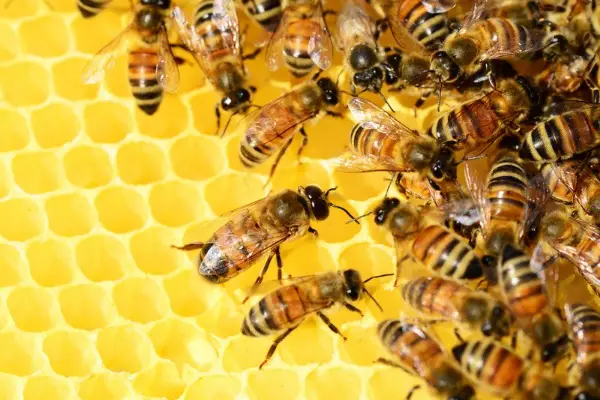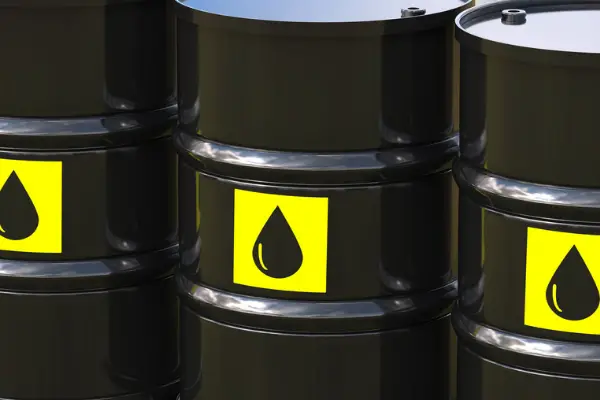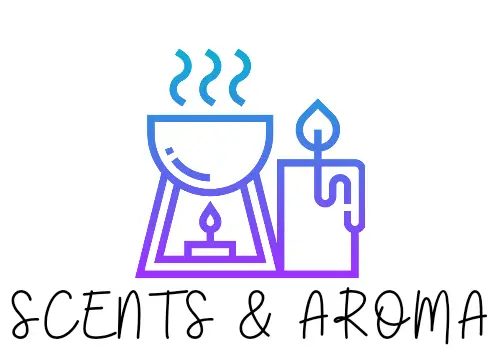Candles have come a long way since their initial use as a primary source of light. Even with the advent of electricity, their popularity has grown to encompass their new use.
Candles are a potential source of heat and emission of fragrances. Before we delve into the new world of candles and their potential use and benefits, let us examine the basics.
Candles are made from a range of flammable substances but are solid at room temperature and melt when in contact with heat from any source. These substances include natural fats, tallow, or wax. But for this article, we will consider only wax candles.

Waxes are solid, glossy substances derived from a distinct class of organic compounds. They are made of fat or oil, insoluble in water, and flammable. Various types of natural waxes can be found in petroleum or produced by plants and animals.
To make candles using wax, first, wax is heated and melted to prepare a pure, high-quality wax base. A spool of the wick, usually lead, is passed through the molding machine before pouring the melted wax in to fit the shape of each preheated mold.
The cotton or linen wicks are braided and then treated with chemicals or inorganic salt solutions so that they bend at a 90-degree angle when burning.
This angle allows the end to remain in the outer mantle of the flame; hence, is naturally shortened.
The wax is then allowed to cool at a temperature slightly above its melting point as it solidifies. The molding machine consists of numerous molds surrounded by a jacket that receives cold water to help speed up the solidification process.
After this, the candle maker pulls the candle out of the mold once the wax solidifies. He then repeats the process. Excess wax is then trimmed, collected, and re-used.
Candlemakers use different types of wax to make candles. They include;
- Paraffin wax
- Soy wax
- Palm wax
- Beeswax
- Gel wax
- Rapeseed wax
- Coconut wax
They each have unique properties, distinct smells, and different burn times. In this article, however, we will be dealing with just soy wax, beeswax, and paraffin wax candles to examine which one of the three is best.
Which wax is best for candles?
Straight off I want to answer this question,which wax is the best out of soy wax, paraffin wax and beeswax for candles?
Deciding which wax is the best depends on your values. Soy wax is vegan friendly but not as sustainable, paraffin wax is cheap but slightly toxic and not eco friendly and beeswax is sustainable and clean but no vegan friendly. They all make good candles in their own way.
Read on to find out more information about each of the waxes so that you can make an informed choice.
ARE SOY WAX CANDLES TOXIC

Soy wax is a 100% all-natural wax made from hydrogenated soybean oil. The main ingredient in soy candles is soybeans.
After harvesting the soybeans, they are cleaned, cracked, de-hulled, and rolled into flakes. Soybean oil is then extracted from the flakes and separated from its solid components by solvent extraction or mechanical pressing.
The soybean oil undergoes hydrogenation. Hydrogenation is a process that converts the fatty acids in the oil from unsaturated to saturated, resulting in an alteration of the melting point of the oil. This lets it solidify at room temperature. The leftover soybean husks double as animal feed.
Studies have shown that soy wax candles do not emit toxic chemicals when burned. Instead, soy wax candles offer a clean burn with minimal soot production. They are 100% biodegradable, eco-friendly, renewable, sustainable, and carbon neutral.
ARE PARAFFIN WAX CANDLES TOXIC
Paraffin wax is also known as petroleum wax. It was discovered as a “breakthrough in wax” in the mid-1850s and was preferred for its clean burn and odorless smell.
However, in recent times, paraffin wax seems to be falling out of favor even though it is still the most common type of wax available.
There have been rumors and claims that Paraffin candles create and release known carcinogens like benzene, toluene, ethyl-benzene, and xylene when it burns.
Paraffin wax is a byproduct of crude oil refinement separated from the oil through crystallization. Although it comes from a natural source, it usually isn’t considered a natural wax.
A study by South Carolina State University in 2009 found that burning paraffin wax candles give off harmful fumes like toluene and benzene linked to asthma and lung cancer.
It detailed that frequent lighting of multiple paraffin candles in a poorly ventilated space could lead to irritation of the skin and respiratory tract.
This study garnered widespread controversy on the effects of paraffin wax, even though it also stated that it would take years of exposure for these health problems to occur.
The facts we know to be true are that candles made with paraffin wax burn much quicker than the average wax candles.
Apart from the toxins they may emit, the candles also contain other hidden dangers in the form of additives derived from petroleum called microcrystalline or polyethylene. The additives improve the texture of the wax and add a glossy finish to it.
Even though its impact on human health is debatable, environmentally conscious people refrain from purchasing paraffin wax candles due to their relationship with non-renewable fossil fuels.
All candles, whether natural or paraffin, use a combustion system. After melting the wax, it is drawn up through the wick and burned to create a chemical reaction that is emitted into the environment. Soy wax and beeswax are highly viable alternatives and are arguably more sustainable.
ARE BEESWAX CANDLES TOXIC

But are beeswax candles toxic?
Beeswax is another 100% all-natural wax. These candles were first used in Europe during the Middle Ages. Beeswax is all-natural because they are from bees.
Worker bees, which have a lifespan of about 35 days, develop special wax-producing glands during the 10th-16th day of their lives.
As the bees consume honey (they consume 6-8 pounds of honey to produce a pound of wax), the wax-producing glands convert the sugar into wax. The converted wax is extruded through tiny pores on their abdomen.
The wax appears as small, transparent flakes which become white after chewing. Salivary secretions help to soften the wax, and this eventually gives rise to the change in color.
As raw honey is about to be collected, the beehive frames capped with beeswax are scratched off to expose the honeycomb. The collected wax is rid of impurities by boiling and filtering, leaving natural and pure beeswax.
Beeswax candles are rare, expensive, and have a delicate and natural scent. They also burn longer and brighter than the other wax candles cited in this article.
Beeswax candles are known to help purify the air as they release negative ions that bond with household airborne toxins derived from aerosols, paint, and other harmful byproducts
. This bond causes the toxins to descend to floor level resulting in air purification.
WHICH WAX MAKES THE MOST ECO-FRIENDLY CANDLE
An eco-friendly candle does not bring harm to the planet in any way. From the three previously highlighted candle types, it is essential to note that soy wax candles and beeswax candles are the most eco-friendly.
Unlike soy wax candles and beeswax candles, paraffin wax candles are non-biodegradable and slightly toxic.
Soy wax candles are a plant-based resource derived from soybeans. They are essentially renewable, biodegradable, and CO2 neutral.
Beeswax is arguably the most eco-friendly, and since nature practically takes care of the production process, they can boast to be 100% natural.

WHICH OF THE WAXES ARE MORE SUSTAINABLE
According to the United Nations, a sustainable product does not compromise the ability of future generations to meet their needs.
The most sustainable wax candle is the Beeswax candle. This is because it is a natural byproduct of the beekeeping industry.
While many would argue that beeswax is not sustainable as honey bees face major declines due to climate change and pesticides, we can still deal with these concerns.
Supporting local beekeepers can ensure a sharp rise in their livelihood, and letting bees pollinate in chemically-treated fields would reduce the risk of exposure to pesticides.
On the other hand, the soy industry is linked to deforestation since we need to clear and till forests for soybean production.
Soybeans can also be grown from genetically modified seeds with high resistance to herbicides/pesticides, encouraging farmers to use higher doses of these chemicals to kill weeds and pests.
These chemicals pollute the environment and may leave traces in soy wax. In the long run, they may not be as sustainable as the Beeswax industry.
WHICH OF THE WAXES ARE VEGAN
Beeswax is not vegan friendly since it is produced by bees. Most vegans speak out on the unfair treatment bees receive to make beeswax.
Apart from harvesting their honey, they are given sugar water in return. Sadly, the water is nutritionally deficient and can expose them to parasitic infections.
As a result of these complaints, beeswax has long been ruled out as a vegan-friendly option for wax candles.
On the other hand, paraffin wax is derived from petroleum and is labeled as a type of naturally found wax. However, it is too soft on its own to make wax strong enough for a candle.
As a result, stearic acid is usually added to harden it and provide opacity. Stearic acid often comes from animal fat, thus ruling out paraffin wax as a vegan-friendly option.
Soy wax candles are the most vegan-friendly since they come from a vegetable source, natural and biodegradable. They are also eco-friendly, renewable, and prepared without the use of animal-based stearic acid.
FINAL THOUGHTS
When you light a candle, the wax melts, vaporizes, and combust to produce heat and light. Candles that were previously a very important source of light now symbolize celebration and yearning- a means to express romance, soothe the senses with a variety of fragrances, and accentuate decorations.
Choosing the best candle wax is not cut and dry as they all have their unique properties, scents, and uses, as well as their negating factors.
Paraffin wax is the most affordable and most used candle wax as it can hold strong fragrances and colors. However, since it is made from a by-product of the oil industry, it is not considered the most eco-friendly type. It is also slightly toxic as it emits volatile compounds and toxins when burned.
Beeswax, used as far back as the 19th century, is one of the oldest forms of candle wax. As a 100% all-natural wax, it is the most eco-friendly and sustainable option since it is solely derived from bees during the honey-making process.
It has a subtle natural scent and burns clean without the emission of volatile compounds but releases negative ions that help to purify the air. However, it is rare to come by and can be very expensive.
Soy wax, invented in 1996, is a vegetable wax derived from soybean oil. It is a renewable source and eco-friendly since it burns clean and gives off only minimal soot. It is also the best vegan wax candle since it comes from a 100% plant source.
- Can You Put Perfume In A Humidifier? (Read First) - September 17, 2022
- Can You Put Essential Oil In A Steam Mop? (Safety Advice) - September 17, 2022
- How To Make Lavender Oil At Home ( Candles And Diffusers) - September 9, 2022

